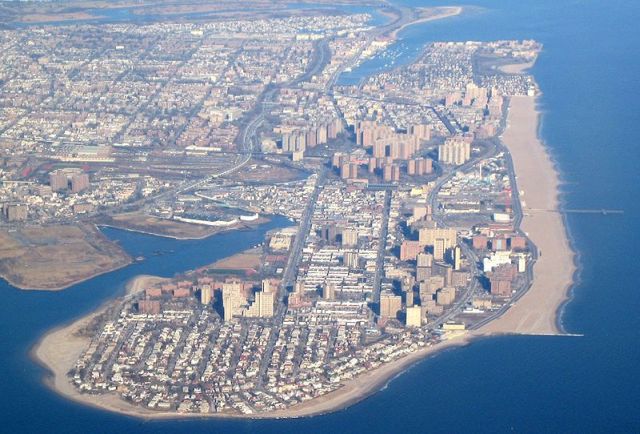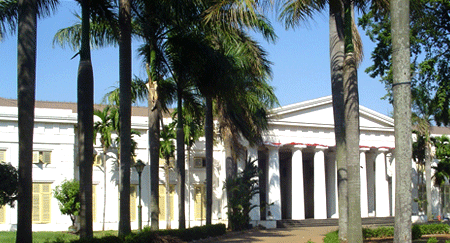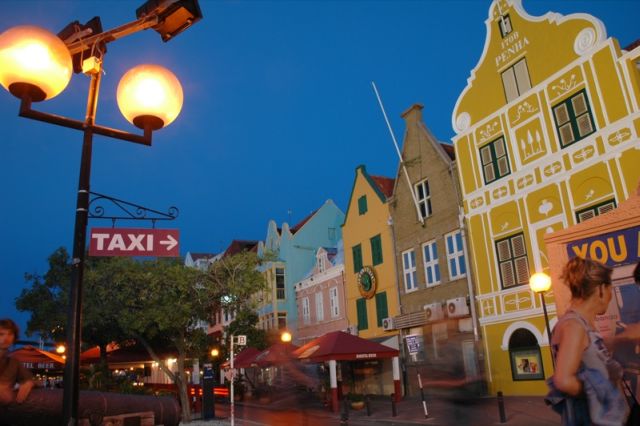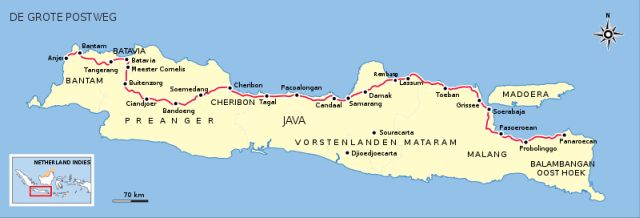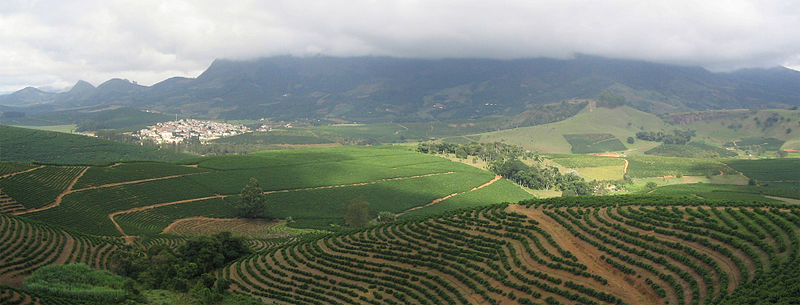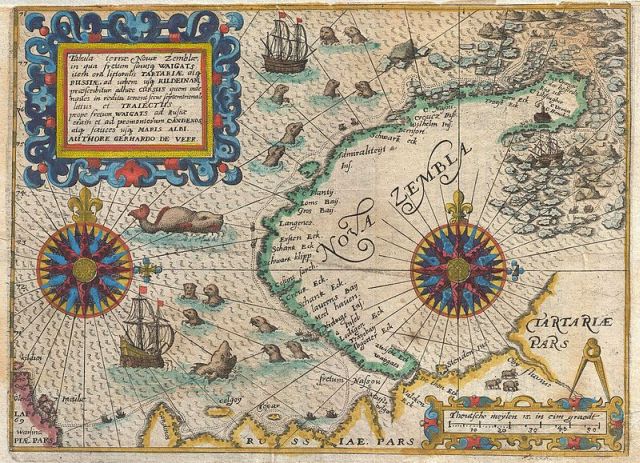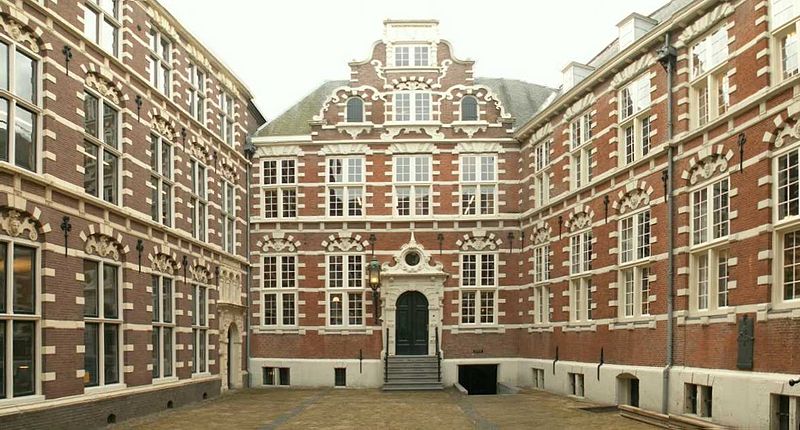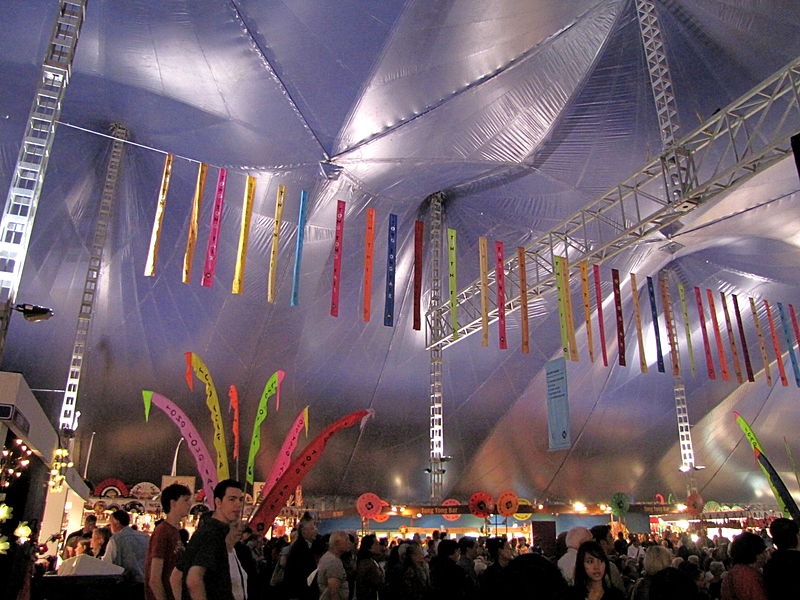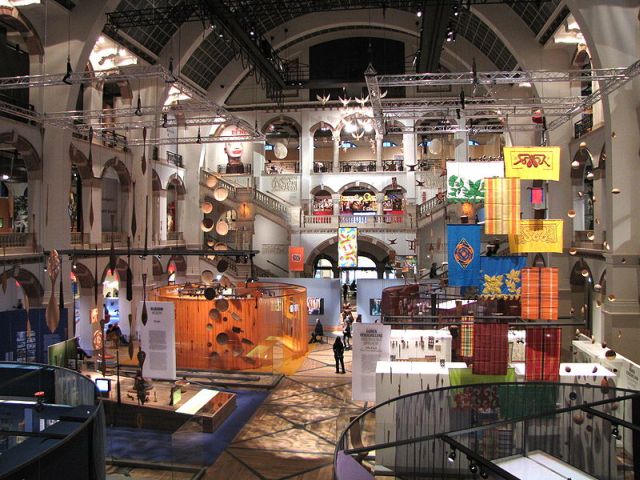The 350 years of colonizing activities of the Netherlands have affected both the colonial areas and the Dutch society itself. That influences, however, are not evenly distributed.
Even in the former colonies Dutch traces tend to be or very clear and tangible (architecture, language, names, vivid collective memory), or rather poorly visible in the form of documents or archival collections. According to the researchers from the Royal Netherlands Institute of Southeast Asian and Caribbean Studies (Koninklijk Instituut voor Taal-, Land- en Volkenkunde, KITLV) in Leiden, an institution specializing in the problems of Indonesia, there is even a paradox. While the so-called Dutch East India had a huge economic, geopolitical and cultural impact on the Netherlands, demographic and cultural Dutch heritage is in the consciousness of modern Indonesians rather faint. Africa is different. Despite the fact that South Africa was in Dutch hands only for 150 years, the language based on English 17th century Dutch peasants survived, and contacts with the former metropolis have always been intense.
THE FORMER COLONIES
The former Dutch colonies, at least those with closer relationship with the Netherlands, are treated in this country as related (verwantschapenslanden). Postcolonial clues existing there up today can be divided into several categories.
Language
In most of the colonies, due to the large mix of nationalities, Dutch language had never been dominant. The only exceptions were South Africa and Suriname, where it is still the official language.
Africaans language coverage, South Africa
Sarie Marais, a famous song from South Africa (afrikaans)
In the latter country Dutch became popular only in the 20th century – in present time it is used by as much as 82% of the population. It is not difficult however to discern Dutch words in Indonesian (especially in scientific and technical terminology); in the dialects of some U.S. states, such as Jersey Dutch, Dutch and Mohawk Dutch Albany, and of course in the languages spoken in the Caribbean. In terms of languages the former Dutch Antilles are divided into two zones: the “ABC” islands (Aruba, Bonaire, Curacao), where their inhabitants speak Dutch and Papiamento, and the “S” islands (St. Maarten, Saba, St. Eustatius), where Dutch is used with English, and in the case of St. Maarten – also with French.
Society
The only larger ethnic 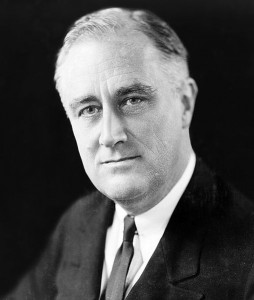 group that has its roots in the Netherlands is South African descendants of Dutch settlers, called Boers or Afrikaners. (The Dutch willingly settled there also after passing the colony under the British rule). Some of Dutch blood flows in the veins of some ethnic groups in Sri Lanka (Burgher population), Indonesia (IDN) and the Creoles of Suriname. Descendants of Dutch colonists were three U.S. presidents: Martin Van Buren, Theodore Roosevelt and Franklin Delano Roosevelt. On the picture: president FD Roosevelt.
group that has its roots in the Netherlands is South African descendants of Dutch settlers, called Boers or Afrikaners. (The Dutch willingly settled there also after passing the colony under the British rule). Some of Dutch blood flows in the veins of some ethnic groups in Sri Lanka (Burgher population), Indonesia (IDN) and the Creoles of Suriname. Descendants of Dutch colonists were three U.S. presidents: Martin Van Buren, Theodore Roosevelt and Franklin Delano Roosevelt. On the picture: president FD Roosevelt.
Colonial activity of the Netherlands has also influenced ethnic and national structure of certain countries. It was during the reign of the Dutch that Chinese began to migrate en masse in Taiwan, giving China in 1949 a pretext for the annexation of the island. And African slaves were transported en masse to America on Dutch ships.
Naming
New York’s Brooklyn district takes its name from the Dutch name Breukelen and Haarlem from Haarlem in the Netherlands. Other American names of Dutch origin are Coney Island (Conyn Eylandt – Rabbit Island), Orange County, Nassau County, Staatsburg, Kinderhook, Coeymans, Stuyvesant, etc.
Coney Island
In South Africa they are Johannesburg, Kaapstad, Vereeniging, Vanderbijlpark and Bloemfontein; in Suriname – Alkmaar and Groningen. Aruba’s capital is named Oranjestad, the capital of Curacao – Willemstad. Some places owe their names to great travelers, explorers and cartographers. Some examples are Tasmania, named over Abel Tasman (who worked for VOC), and New Zealand, originally Nova Zeelandia, also discovered by Tasman.
Towns
The most visible evidences of the presence of the Dutch are cities, forts and houses which they left behind. Most of these objects have survived in present Indonesia, on Java, but architecture is derived mainly from the 19th and early 20th century. The most Dutch cities on Java are Jakarta (formerly Batavia), Bandung, Semarang, Yogyakarta, Surabaya and Malang. In Jakarta the most significant architectural remains are presidential palace, the seat of the Minister of Finance and theater.
Museum of Fine Art and Ceramic in Fatahillah Square, Jakarta, former Ministry of Justice
The sad thing is that when Indonesia got independence, many colonial buildings had been destroyed. Along the coastline there are still remnants of colonial forts. Another example from this area is a city Stadthuys in Malacca. In the former Dutch Antilles Dutch style is represented mostly by the city Willemstad, whose houses look like transferred directly from the Netherlands.
Willemstad (Curaçao)
The Dutch architecture has survived also on the other islands. Among fortifications which remained up today are Fort Zeelandia in Paramaribo (capital of Suriname), and in the United States – the ruins of Fort Goede Hoop (now Hartford) in Connecticut and Fort Orange (now Albany, New York).
Infrastructure
When it comes to infrastructure, Indonesians owe a lot to Dutch colonial engineers. According to some calculations in the years 1800-1950 the Dutch built in Dutch East India about 67.000 km of roads, 7.500 km of railways and irrigation system in the area of 1.4 million hectares. Also built by them are 140 drinking water systems, many bridges and several international ports. Dutch work is the Great Post Road (Dutch: Grote Postweg), which runs on the north of the Java and connects eastern and western end of the island.
Grote Postweg
It was built for military purposes in the years 1808 – 1811 and now it is a part of the Java North Coast Road. This road is presented in the document “De Groote Post weg” (1996) by Pieter van Huystee.
Agriculture
In many former Dutch colonies the Dutch introduced cultivations which are used today on a large scale. Such is the case of the Java tobacco, production of natural rubber (second place in the world) and mass production of cocoa (imported from the Philippines). In South and Central America Dutch colonists established and popularized coffee plantations.
Coffee plantation in Brasil, Minas Gerais
Law, education, social systems
350 years of Dutch presence in territories of present Indonesia affected the law system of the former colony, especially the civil code. Its basis was created by Dutch lawyers. Independent Indonesia modified existing law, which currently is a mixture of Roman-Dutch law, local (adat) and the modern Indonesian law.
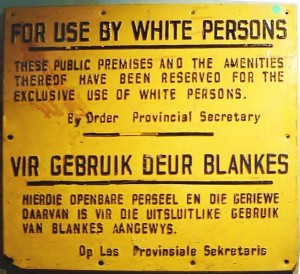 Residents of the colony were allowed to study in the Netherlands. When relations between The Kingdom of the Netherlands and Indonesia were established in the 70s of the past century Indonesian officers got possibility to get education in military schools in the Netherlands. Less glorious legacy of the colonial period was the system of apartheid in South Africa, which existed from 1948 to 1994. It was created by white Afrikaners, due to a policy of racial segregation introduced in South Africa by the Dutch and the British. In the photo: a relic of apartheid.
Residents of the colony were allowed to study in the Netherlands. When relations between The Kingdom of the Netherlands and Indonesia were established in the 70s of the past century Indonesian officers got possibility to get education in military schools in the Netherlands. Less glorious legacy of the colonial period was the system of apartheid in South Africa, which existed from 1948 to 1994. It was created by white Afrikaners, due to a policy of racial segregation introduced in South Africa by the Dutch and the British. In the photo: a relic of apartheid.
Science, geographical discoveries
Few centuries of Dutch presence on overseas territories has resulted in major achievements of scientific and geographical discoveries. They were made both by Dutch or foreign sailors in the service of the East India Company. The first of these, Willem Barentsz, left at the end of the 16th century to the northeast in search of the northern route to Asia, discovering the Nova Zemla (now Russian) and Spitsbergen (now under an international treaty ruled by Norway). The Barents Sea is called after him.
Nova Zemla, a map of 1601
The next two travelers – Englishman Henry Hudson and Dutchman Abel Janszoon Tasman – made new geographical discoveries also acting for VOC. Hudson sought the western route to Asia, arriving in 1609 to the mouth of the river which was later named in his honor the Hudson River. This discovery marked the beginning of the Dutch colonization in that area and establishment of New Amsterdam, which later evolved into New York. 30 years later Abel Janszoon Tasman was the first European who reached Tasmania and New Zealand (1642-1643) and made a map of the northern coast of Australia, Tasmania (originally Van Diemen’s Land), New Zealand and Fiji.
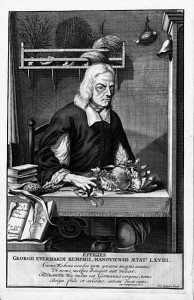 During their stay in the East Indies some VOC envoys wrote several major works of scholarship about those territories and places of their service. One of them was German botanist Georg Eberhard Rumphius, who in his work “Herbarium Amboinense” described about 1,200 species of plants from the island of Ambon. This 17th century publication is highly regarded also today. Another significant work – 12-volume “Hortus Malabaricus” – was supervised by Hendrik Adriaan van Rheede tot Drakenstein, naturalist and governor of the colony Malabar. He described there medicinal properties of over 740 plants. On the picture: Georg Eberhard Rumphius, a portrait form „Herbarium Amboinense”.
During their stay in the East Indies some VOC envoys wrote several major works of scholarship about those territories and places of their service. One of them was German botanist Georg Eberhard Rumphius, who in his work “Herbarium Amboinense” described about 1,200 species of plants from the island of Ambon. This 17th century publication is highly regarded also today. Another significant work – 12-volume “Hortus Malabaricus” – was supervised by Hendrik Adriaan van Rheede tot Drakenstein, naturalist and governor of the colony Malabar. He described there medicinal properties of over 740 plants. On the picture: Georg Eberhard Rumphius, a portrait form „Herbarium Amboinense”.
Excellent description of Japan and its vegetation left German physician and traveler 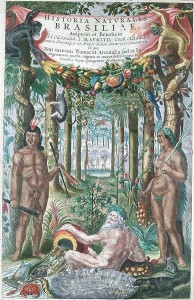 Engelbert Kaempfer, educated, incidentally, at the Universities of Gdansk, Torun, Cracow and Königsberg. He stayed in Japan for 2 years, serving as a doctor in Dutch trade mission in Nagasaki. A lot of descriptions of colonial territories and Japan drew other VOC officials, including Governor John Camphuijs. In Brazil a scientific activity was led by Dutchman Wilhelm Piso and German George Marcgraf whose merit is the first scientific studies of flora and fauna of the region. Their work was published in the mid-seventeenth century books “Historia naturalis Brasiliae” and “De Indiaâ utriusque re naturalistic et medica”. On the picture: “Historia naturalis Brasiliae”.
Engelbert Kaempfer, educated, incidentally, at the Universities of Gdansk, Torun, Cracow and Königsberg. He stayed in Japan for 2 years, serving as a doctor in Dutch trade mission in Nagasaki. A lot of descriptions of colonial territories and Japan drew other VOC officials, including Governor John Camphuijs. In Brazil a scientific activity was led by Dutchman Wilhelm Piso and German George Marcgraf whose merit is the first scientific studies of flora and fauna of the region. Their work was published in the mid-seventeenth century books “Historia naturalis Brasiliae” and “De Indiaâ utriusque re naturalistic et medica”. On the picture: “Historia naturalis Brasiliae”.
THE NETHERLANDS
Modern Dutch society does not cultivate imperial tradition as since the 60s of the 20th century it is dominated by the anti-colonial attitude. But the colonial past left its mark also in the Netherlands. First of all, thanks to gains from colonial trade the agricultural country had been urbanized and the 17th century became so-called the Golden Age century.
VOC residence, Amsterdam
Colonial era influenced the structure of present Dutch society as a large group consists of immigrants from former colonies, mostly from Indonesia and Surinam (they came here after the fall of the empire). According to “Dutch Colonialism, migration and cultural heritage” by KITLV migration to the Netherlands in numbers was as follows: from Indonesia around 300 000 Europeans, Eurasians and the Moluccas (they are called Indische Nederlanders); from Suriname after 1975 – about 100 000 people; from Curacao in the 80s last century around 125 000 migrants. The number of Dutch citizens of the colonial origin is approximately one million.
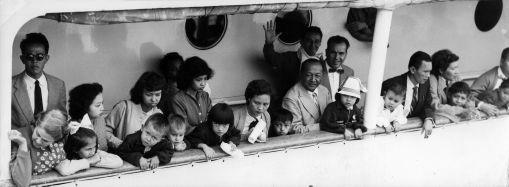
Immigrants from Indonesia, Rotterdam, May 1958
Immigrants introduced in the Netherlands elements of their culture. The most visible are Indonesian influences, especially in the kitchen. The most popular dishes are sateh and Nasi goreng (fried rice). Almost every town has a Toko shop with Indonesian goods, Indonesian restaurant, and in many cities night fairs Pasar Malam are held. The one in the Hague is still the biggest in the world.
Indonesian Cultural Festival Tong Tong Fair, Hague
In science the colonial heritage is manifested by the existence of colonial scientific institutions specializing in problems of the former colonial areas. The oldest is the University of Leiden (founded in 1575), which almost from the very beginning was interested in studies on South-East Asia and Indonesia. Big merits are contributed to the Royal Netherlands Institute of Southeast Asian and Caribbean of Leiden. Founded in 1851, it is the world’s leading center of research on Indonesia, Suriname, the Dutch Antilles and Aruba. A rich collection of cultural, ethnographic and anthropological collections has Tropenmuseum in Amsterdam.
Tropenmuseum, Amsterdam
The colonial traditions of the Royal Dutch East Indies Army (KNIL) maintains Infantry Regiment of John Benedict van Heutsz, formed on July 1, 1950.
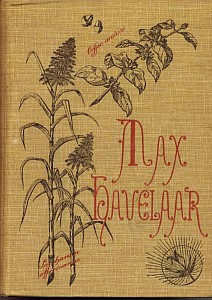 Colonial theme is present in Dutch literature. A good example of it is the novel “Max Havelaar” by E. Douwes Dekker (Multatuli), the Dutch equivalent of “Uncle Tom’s Cabin”. More recent is already mentioned “The Two Hearts of Kwasi Boachi” by Arthur Japin, released in 1997. The colonial past is also present in many Dutch family archives in form of photos, letters or some stories are remembered up today as many of present Dutch people relatives worked once, for a period, in the colonies (read also: A letter from a colony).
Colonial theme is present in Dutch literature. A good example of it is the novel “Max Havelaar” by E. Douwes Dekker (Multatuli), the Dutch equivalent of “Uncle Tom’s Cabin”. More recent is already mentioned “The Two Hearts of Kwasi Boachi” by Arthur Japin, released in 1997. The colonial past is also present in many Dutch family archives in form of photos, letters or some stories are remembered up today as many of present Dutch people relatives worked once, for a period, in the colonies (read also: A letter from a colony).
On the picture: „Max Havelaar” by E. Douwes Dekker, edition nr 9, 1891.
Renata Głuszek
Sources:
- Jan Balicki, Maria Bogucka: Historia Holandii, Ossolineum 1976
- Dutch colonialism, migration and cultural heritage, KITLV Press, Leiden 2008 – (internet summary)


